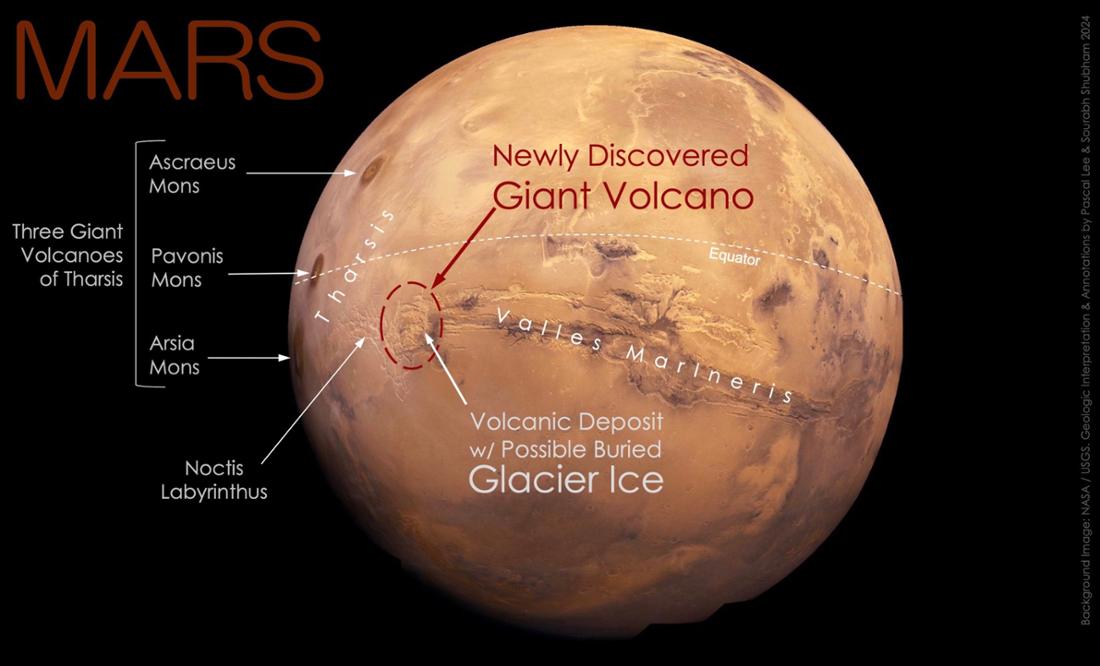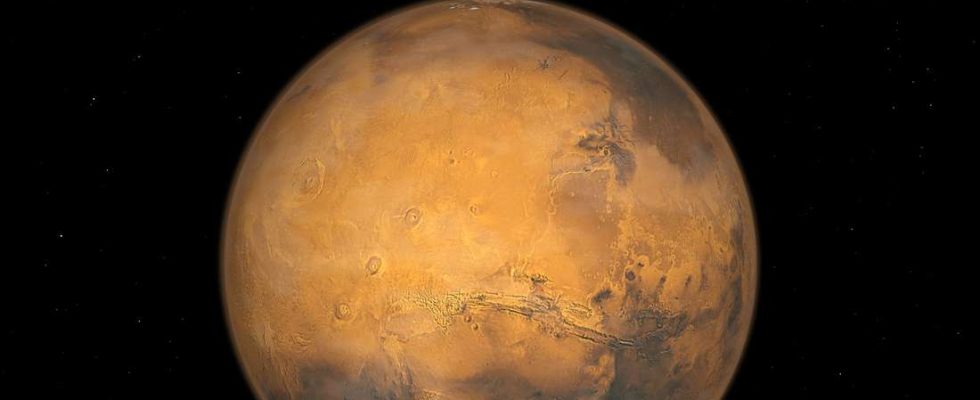Press
Despite being larger than Mount Everest, a volcano on Mars took decades to be discovered. In the future, people could conduct research in the region.
The Woodlands – Mars is home to the tallest volcano in the solar system. Olympus Mons rises 21.3 kilometers and is also the highest mountain in our solar system. The largest volcano in the solar system is also on Mars: Alba Patera has a diameter of more than 1,200 kilometers. Now a research team has discovered another giant volcano on Mars.
The new discovery is located in the east of the Tharsis region, near the Martian equator. There the volcano, which bears the provisional name “Noctis Volcano”, rises to a height of 9,022 meters and a width of 450 kilometers. It is therefore higher than Mount Everest, at 8,849 meters. What is curious is that the newly discovered volcano is located in a region that is regularly photographed from Mars orbit. The huge Valles Marineris rift system and its western extension Noctis Labyrinthus are nearby. Nevertheless, the volcano was not recognized for a long time.
Research team discovers new volcano on Mars
“We were studying the geology of an area where we had found the remains of a glacier last year when we realized we were inside a huge and deeply eroded volcano,” explains planetary scientist Pascal Lee (SETI Institute). Lee is lead author of one Study of the volcanowhich was first presented at the 55th Lunar and Planetary Science Conference in Texas.

“A wide variety of hydrated minerals are known in this area of Mars, spanning a long period of Martian history,” says Sourabh Shubham, co-author of the study. “In a sense, this large volcano is a long-sought ‘decisive evidence’.”
Mars volcano was active for a very long time
According to notice Both the size of the volcano and its complex history of change indicate that it has been active for a very long time. In the southeastern part, the research team discovered a thin, recently formed volcanic deposit, under which glacial ice is likely present.

However, much about the huge volcano remains a mystery. According to the research team, it is clear that it was active for a very long time and was formed in the early days of Mars. However, how early is not known. It is also not clear whether the volcano is still active and could erupt again. If the volcano was active for a long time, couldn’t the combination of volcanic heat and water ice have made life possible in the region? This is also a question that the research team is asking itself.
Volcano on Mars could be a place to search for life
The region could be exciting for future research as a place to search for possible life. The possible presence of water ice at low depths on the equator could be of great interest for future space missions: humans could be able to use the water for themselves and as rocket fuel.

“It’s a combination of things that makes the Noctis volcano exceptionally exciting. It is an ancient and long-lived volcano, eroded so deeply that one could traverse it on foot, by car or by plane to examine various parts of its interior, take samples and date them, and thus trace the evolution of the “To study Mars over time,” says researcher Lee. The interaction of heat with water and ice also makes the newly discovered volcano a “prime location for astrobiology and our search for signs of life.”
Volcano on Mars was overlooked for decades
The study included images from the NASA space probes “Mariner 9”, “Viking 1” and “Viking 2”, “Mars Global Surveyor” as well as the newer space probes “Mars Odyssey”, “Mars Reconnaissance Orbiter” and the ESA probe “Mars Express” is used. The oldest spacecraft, Mariner 9, was active until 1972 and shows how long the volcano was overlooked. (tab)

